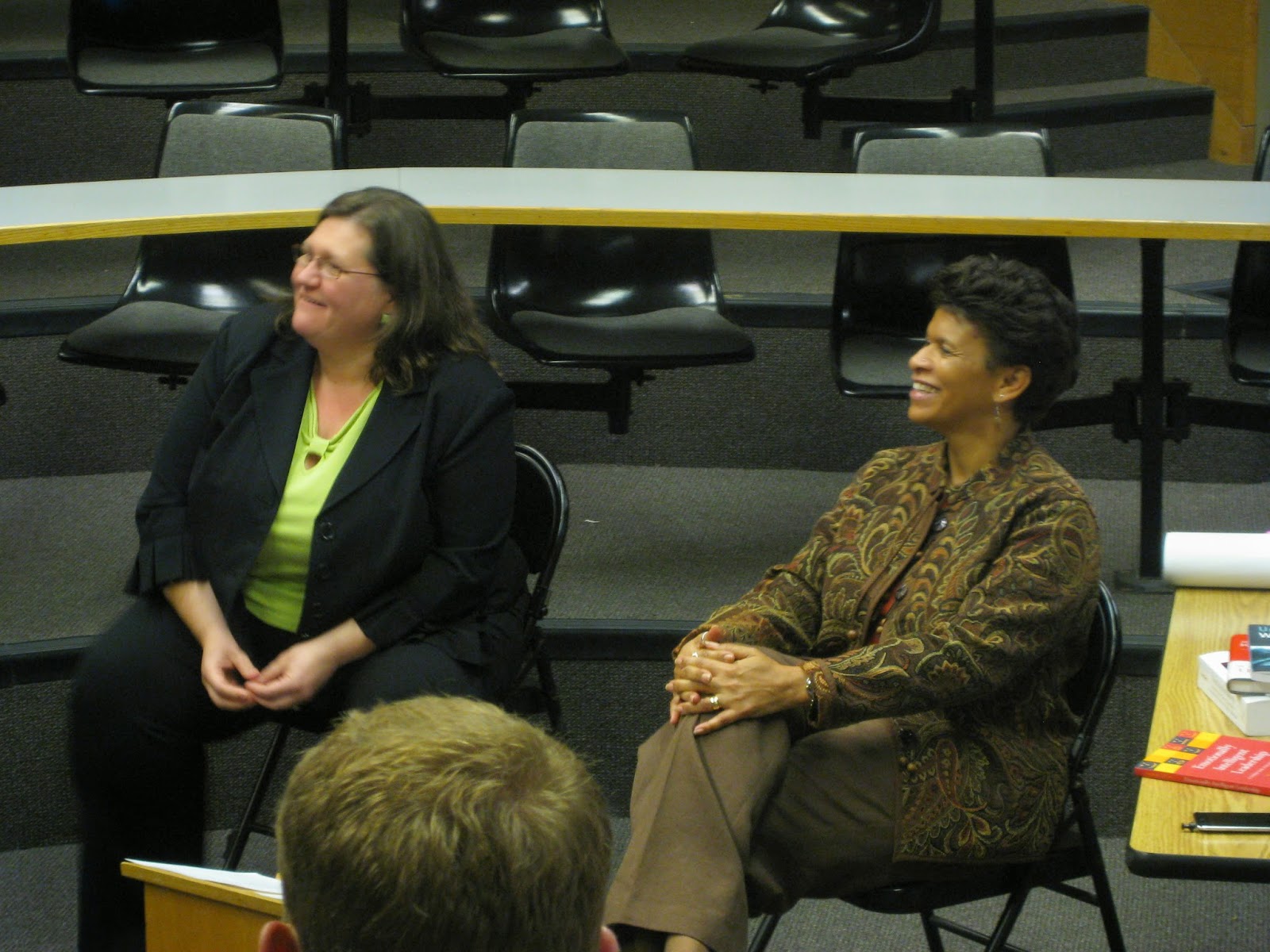Menu
- Public Policy
- Leadership
- Funding
- News & Events
- About the Center
Back to Top Nav
Back to Top Nav
Back to Top Nav
Back to Top Nav
This ongoing series explores sessions of the Management and Leadership Development Program (MLDP) through participant narratives. MLDP is a one-term program designed to develop citizen leaders among sophomores, juniors, and seniors at Dartmouth College. Led by expert guest speakers each week, sessions employ experiential teaching techniques to engage students through hands-on learning of core management and leadership skills.
 |
| Danielle Thompson collaborates with students during a MLDP session. |
Danielle Thompson ’96, Rockefeller Center assistant director of student and public programs, presented this special session of MLDP. To make it especially effective, Thompson used social media as the primary means of presentation rather than a PowerPoint presentation. Thompson covered several social media tools, including Facebook, Twitter, LinkedIn, Flickr, and blogging. For each tool she provided statistics and basic information as well as demonstrated them. She also had participants practice using a few of them.
Some highlights:
• Facebook is the largest social media network, with 1.5 million posts per day. More and more employers are looking at Facebook profiles as part of their method of getting to know potential employees because it short-circuits looking exhaustively at resumes. Facebook posts either support or conflict with users’ values, a consideration when posting personal entries.
• Twitter is a popular campaigning and marketing tool. Twitter has advantages over Google in that it can give you more information on a company; you can see who their followers are and what other companies are similar. Twitter is used often by journalists looking for breaking news, and it is used in higher education to facilitate discussion.
• LinkedIn aids productivity by making professional connections more visible. It’s a great way to keep up with colleagues and other people with a common bond, making it a useful addition to one’s social networking repertoire.
• Flickr has a community component, rather than other sites for just uploading your own photos. It’s helpful in finding commonalities among groups, and it can go from one platform to another. It’s very useful in developing a marketing campaign in that images can create a bigger impact than text.
• Blogging has been out there longer than most other social media. Blogging is a great way to capture a message: content is king. With blogging, one can maintain a dialogue, but it’s not as engaging as some folks would like, and one needs to “blog” often to not be forgotten.
Social media is no longer a fad: it’s a fundamental change in the way we communicate. Mobile technology is at its peak and may well become THE outreach method to create awareness, followers, fundraisers, and donors. One can use social media to market oneself, products, candidates, and educational causes. Leaders will need to tune in to social media sites to know what’s going on. Because of the importance of social media to current and future leaders, Thompson encouraged participants to check out social media tools, learn them, and learn how they can work to enhance success in leadership roles and in personal life.